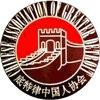Chinese community organizations are helping migrants in new countries feel at home. They are also developing ways to preserve and promote Chinese culture.
Xi Jinping, the Chinese president and party chief, has called for forging a strong sense of community for the Chinese nation. This article explores how these communities are doing just that.
Salt Lake City
A crimson paifang arch structure frames the entrance to Utah’s Chinatown, which stretches across a city block and encompasses a bustling Asian supermarket. Amid the savory smells of traditional beef pho and sizzling meats, customers peruse Chinese-made cosmetics and fresh produce.
In 1900, Chinese tenements and businesses dotted Plum Alley in downtown Salt Lake City, and the Joss House and Bing Kong Tong anchored community life. Although few families lived in the area, members of the community connected through a range of rituals. For example, a late night society meeting—described in the Deseret News as “as weird as could be imagined”—served to maintain links to other Chinese communities and to Chinese culture.
However, racial formations and racism shaped the way that white Salt Lakers understood Chinese residents in the urban landscape. Increasingly, local whites defined the city through associations with Chineseness that were broader than ethnicity or kinship. As a result, Chinese Salt Lakers became distinctively mobile within the city while whites sought to limit their mobility in order to control the potential racial invasion they represented.
Portland
In Portland, you can find a diverse Chinese community that preserves culture, practices and traditions while interacting with the rest of the city. Whether you’re seeking to sample local cuisine in Old Town Chinatown, sipping on sustainably sourced coffee at Stumptown, or exploring a host of Chinese-themed art exhibits for free during First Thursday, the Rose City has something for everyone.
The heyday of Cantonese-Chinese settlement in Oregon lasted from 1860 to 1885, when changing material conditions opened up economic opportunities and caused many Chinese to relocate from the West Coast to Oregon. During this time, the Chinese consolidated and institutionalized their communal leadership. This included lineage (or clan) associations, wooi-kun or district associations, guilds and professional organizations, secret societies in the form of large fraternal lodges and smaller fighting tongs, and local Chinese Christians and advocacy groups.
Today, the largest concentration of Chinese people in the city lives north of the historic Chinatown area in areas like Old Town and SE 82nd Avenue. Gloria Lee, an organizer with the Northwest Chinese Alliance, says that the reason for this shift is less about gentrification and more about a desire to be “less visible.”
New York City
New York City contains the largest Chinese community in North America outside of Asia. Manhattan’s Chinatown is a tightly packed, sprawling neighborhood of restaurants, businesses, thriving fish and fruit markets, and residences. The area is patrolled by the 5th Precinct of the New York City Police Department and includes Little Fuzhou (on East Broadway), inhabited mainly by residents from Fuzhou, in mainland China’s Fujian Province.
Chinese residents in NYC over 25 have a lower percentage of those with a high school diploma or higher, and a slightly lower percentage earning a bachelor’s degree or higher, than the City as a whole. However, Chinese residents are more likely to be enrolled in public health insurance than the City average, and have the lowest unemployment rate among all Asian groups.
Between 2015 and 2020, the population of Chinese people in NYC increased a greater percentage in Staten Island and Queens than did the City as a whole or other Asian populations. Moreover, popular styles of regional Chinese cuisine such as Hakka, Sichuan, and Zhejiang have become widely available throughout NYC.
Los Angeles
The largest Asian community in the United States is located in Southern California. The city of Los Angeles is home to many cultural and historical landmarks, including the Chinese American Museum in Garnier Building inside the El Pueblo monument. The museum is dedicated to promoting and celebrating the Chinese American experience in Southern California.
The collection includes the papers of attorney You Chung Hong (1898-1977), who fought for the rights of Chinese Americans, including making immigration more accessible to them during the exclusion era. Other materials relate to the New Chinatown neighborhood, the Mei Wah Girls’ Drum Corps and the Chinese Presbyterian Church in Old Chinatown.
A stroll through Chinatown is a quintessential Los Angeles experience, with its many shops and restaurants offering a unique fusion of traditional Chinese culture with Californian vibes. The area has a long history of supporting its residents through benevolent societies and mutual aid efforts. In addition, it has a rich tapestry of cultural heritage that is preserved by many organizations throughout the region.
